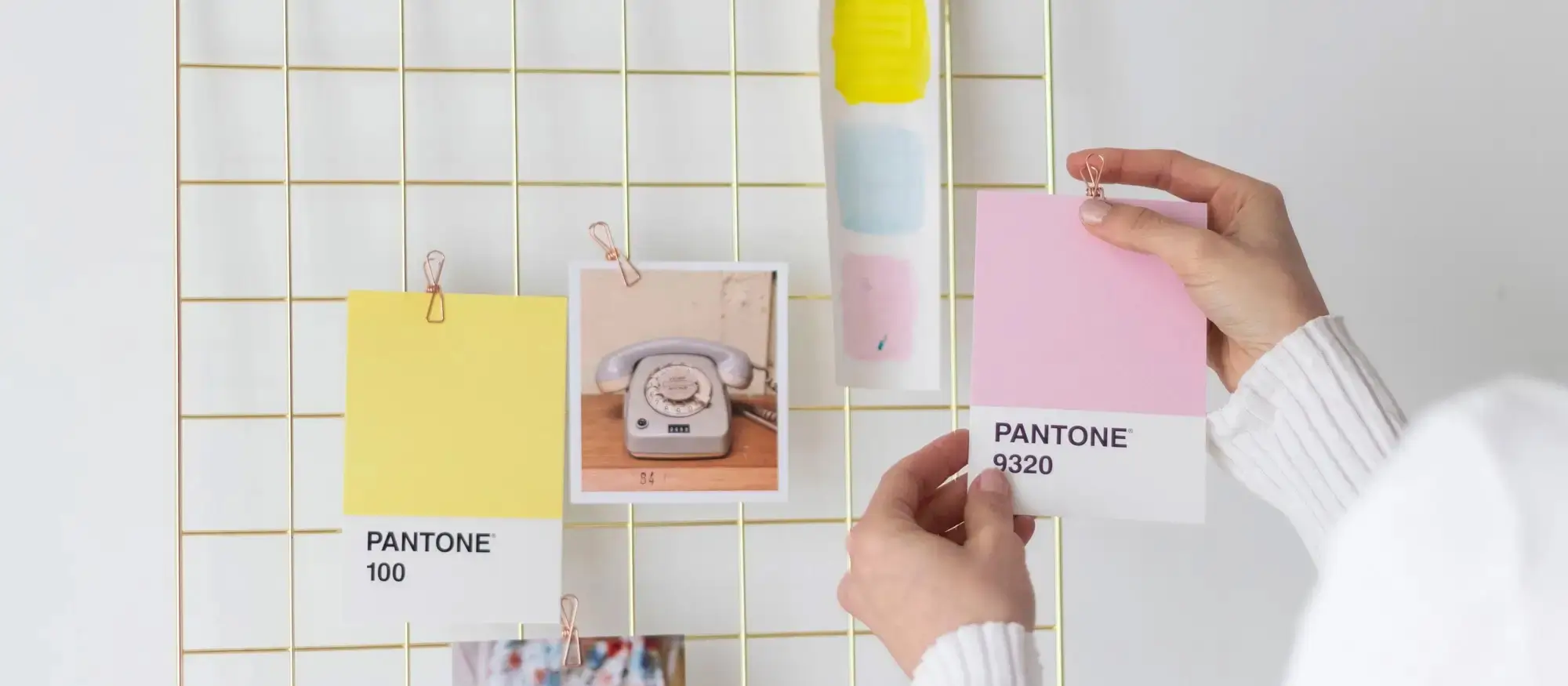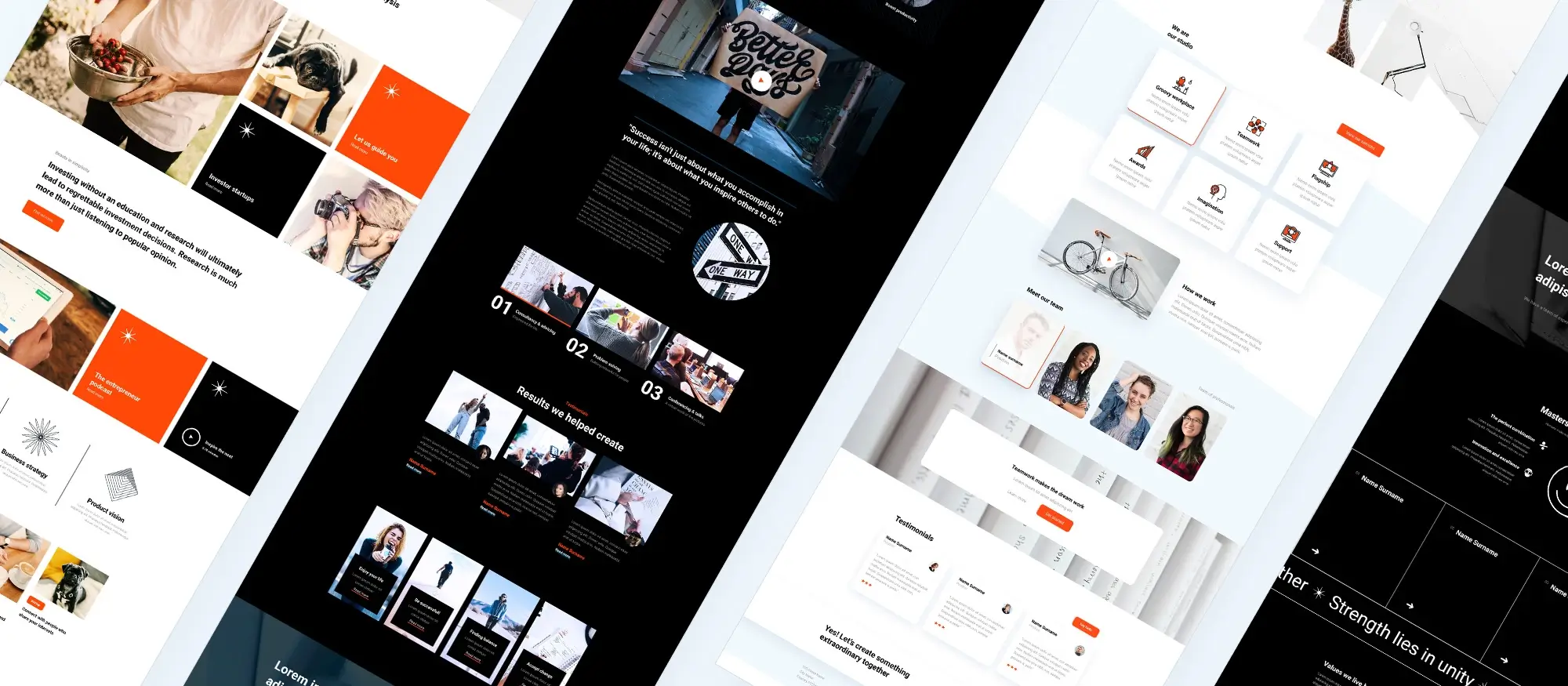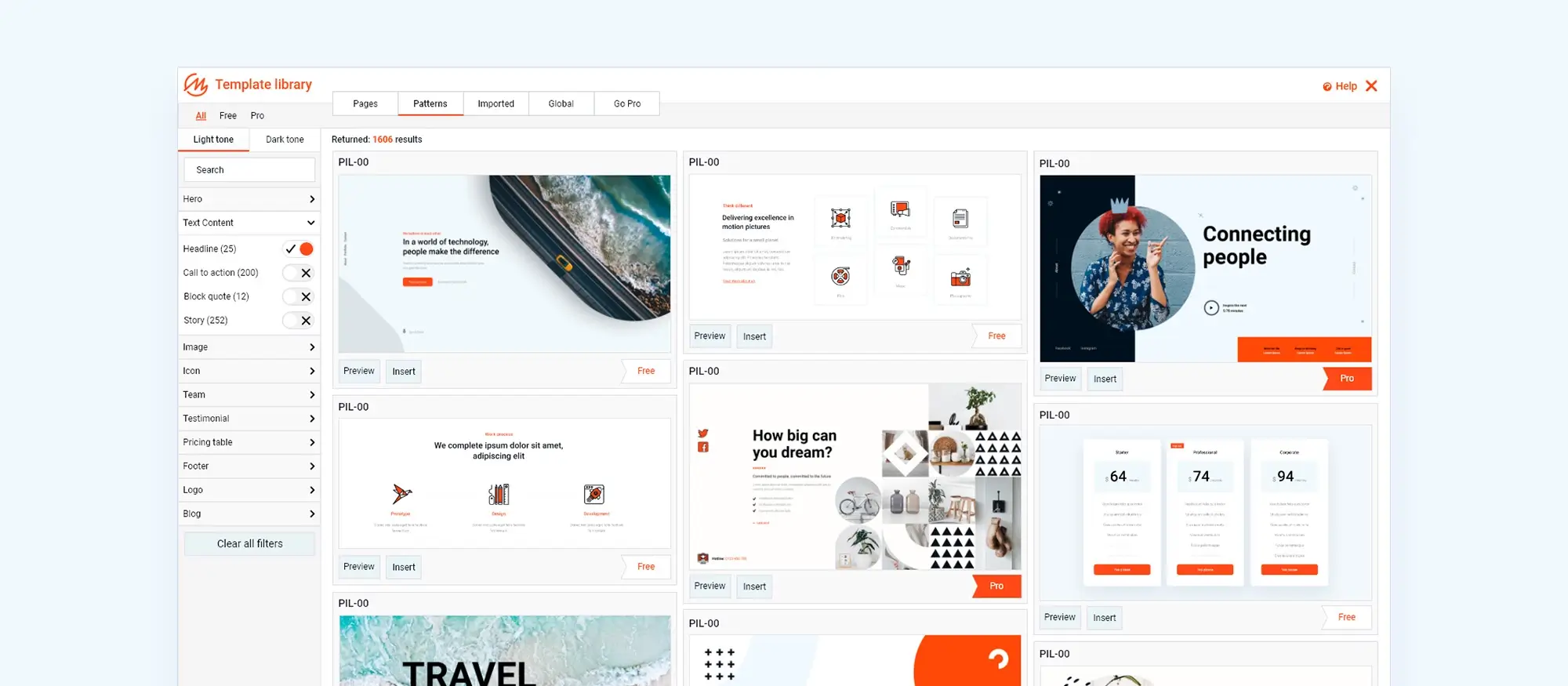How to create custom WordPress themes easily
Try MaxiBlocks for free with 500+ library assets including basic templates. No account required. Free WordPress page builder, theme and updates included.

Updated 15th May 2025
How to create your own custom WordPress theme
WordPress powers a significant portion of the internet and continues to be a leading choice for individuals and businesses building websites. One of the features that makes WordPress so powerful is its theme system. Themes control the appearance and structure of your site, and with the right tools, you can go beyond off-the-shelf designs to build something uniquely yours.
This guide will introduce you to the process of creating a custom WordPress theme. You will learn what a theme is, why building your own can be beneficial, and what steps are involved in getting started.
What is a WordPress theme?
A WordPress theme is a set of files that define how your website looks and functions. These files include templates, stylesheets, images, and optional scripts. When you activate a theme in WordPress, it applies these design rules to your content, changing how your pages and posts appear to visitors.
Themes can be downloaded and installed from the WordPress theme directory, but if you want full creative control, building a custom theme gives you the freedom to shape your site from the ground up.
Why create your own custom theme?
Building your own theme offers several advantages. First, it allows you to create a design that reflects your brand, voice, and functionality needs without compromise. You can choose exactly how content is structured, how navigation works, and how elements behave across devices.
Second, it gives you valuable experience with web development. Working with HTML, CSS, PHP, and the WordPress templating system improves your technical knowledge and opens up further customisation options. For designers and developers, this knowledge can also lead to freelance opportunities or the chance to sell premium themes.
Whether you are building a portfolio, launching a blog, or creating sites for clients, learning how to create a custom theme is a rewarding way to level up your WordPress skills.

Getting started with custom WordPress theme development
Before building a custom WordPress theme, it is important to understand the basic tools and knowledge you will need. With the right setup and a clear grasp of how themes work, you can begin developing with confidence and purpose.
Prerequisites for creating a custom theme
To begin, you should have a working knowledge of HTML and CSS, as these languages are essential for structuring and styling your theme. A basic understanding of PHP is also helpful, as WordPress uses PHP to manage dynamic content. Familiarity with how WordPress is structured including its file system, template hierarchy, and functions will make the process much smoother.
You will also need the right tools. Choose a code editor you feel comfortable with, such as Visual Studio Code or Sublime Text. These editors support syntax highlighting, version control, and other features that streamline development. Lastly, install a local server environment like Local by Flywheel, which lets you run WordPress on your computer and test your changes in real time.
Setting up your development environment
Begin by downloading and installing Local by Flywheel. This tool handles the setup of a local WordPress site with just a few clicks. Create a new site and note the folder where WordPress is installed, this is where you will build your theme.
Open your code editor and connect it to the local WordPress directory. From here, you can begin creating and editing the theme files directly. Developing locally ensures your work remains private until you are ready to launch or migrate it to a live server.
Using a starter theme as a foundation
While it is possible to build a theme completely from scratch, most developers begin with a starter theme. A popular choice is Underscores, which provides a clean, well-structured base to build from. Download the starter theme and place it in the /wp-content/themes/ folder of your local WordPress site.
Activate the theme through the WordPress dashboard. With Underscores installed, you now have the foundation for a fully customisable theme. It includes only the essentials, allowing you to focus on your own styles, layouts, and features.
Understanding the key components of a WordPress theme
A WordPress theme is made up of several core files that define both its appearance and behaviour. These include:
- style.css – controls the visual styling and includes meta information about the theme
- index.php – the main template file used to display content when no other template matches
- functions.php – adds functionality to your theme, such as custom menus, widgets, and scripts
- header.php and footer.php – manage the top and bottom sections of your pages
- single.php, page.php, and archive.php – control how individual posts, static pages, and archives are displayed
Understanding how each file works within the WordPress template hierarchy will help you customise layouts, loop through content, and apply conditional logic as your theme grows.
Subscribe to our newsletter
Creating the basic structure of your custom WordPress theme
With your development tools in place, it’s time to lay the foundation for your theme. This part of the process involves organising your files, adding basic functionality, and preparing your theme for styling and layout work.
Organising your theme files
Begin by creating a new folder within the wp-content/themes directory. Give the folder a clear, recognisable name that reflects your project. Inside, you’ll add the core theme files that make up the structure of any WordPress theme, including style sheets, templates, and a functions file. These form the framework for both the appearance and functionality of your site.
Setting up your style.css file
The style.css file not only defines your site’s visual style but also contains key theme information. At the top of the file, you’ll enter details such as the theme name, author, description, and version. This information allows WordPress to recognise and list your theme in the dashboard. Once this is in place, you can begin adding your CSS rules to customise fonts, colours, spacing, and layout.
Configuring theme functionality in functions.php
The functions.php file acts as a central hub for adding and managing functionality. You can enable WordPress features like post thumbnails, menus, and custom logos. It’s also where you define widget areas, register navigation menus, and connect external functionality. This file allows your theme to communicate with the core WordPress system and extend its capabilities in a controlled way.
Adding templates for structure and layout
Key template files such as header.php, footer.php, and index.php form the layout structure of your theme. The header and footer files define what appears at the top and bottom of each page. The index.php file provides a default structure for your content and is used whenever no specific template exists for a post type or page.
Linking and loading styles and scripts
To properly apply your styles and scripts, use the WordPress enqueue system. Rather than hard-coding links into your header, enqueueing ensures that your assets load in the correct order and avoids conflicts with plugins or other themes. This method also supports better performance and compatibility, especially when adding JavaScript functionality or custom fonts.
With this foundational structure complete, your theme is now ready for further development. From here, you can begin building custom layouts, adding dynamic content, and tailoring the design to match your brand or client needs.

Final steps in developing your custom WordPress theme
After building the structure and styling of your theme, the final stages involve adding flexibility through the WordPress Customizer, ensuring compatibility through testing, and preparing your theme for launch. These steps help refine the user experience and complete the development process.
Customising the theme with the Customizer API
The WordPress Customizer API enables you to add editable settings to your theme, such as colours, logos, fonts, and layout options. These settings are accessible through the WordPress admin panel, where changes can be previewed live before they are published. Using the Customizer makes it easier for end users or clients to personalise their site without editing code directly. You can add custom sections, controls, and even dynamic previews to improve the overall editing experience.
Testing and debugging your theme
Before using your theme on a live site, it’s essential to test it thoroughly. Check how it performs across different browsers such as Chrome, Firefox, Safari, and Edge, and test on multiple devices to ensure responsiveness and usability. Debugging tools within WordPress can help identify issues, especially if you enable debugging mode in your development environment. Address any layout inconsistencies, plugin conflicts, or functionality issues to ensure your theme runs smoothly and reliably.
Exporting the theme and uploading it to your site
Once you are confident in the stability and appearance of your theme, it’s time to prepare it for use. Ensure all files are well-organised and remove any unused assets. Compress the theme folder into a zip file, which you can then upload via the WordPress admin area. Navigate to Appearance > Themes, select “Add New”, upload your zip file, and activate the theme. After activation, check your site thoroughly once more to confirm everything is displaying and functioning as expected.
With your theme now live, you have not only customised the look and feel of your site but also gained valuable insight into how WordPress themes work from the inside out.
Build like a pro
Expanding your knowledge and selling your own WordPress theme
Creating a custom WordPress theme opens the door to personalisation, skill development, and even commercial opportunities. Whether you are designing a site for yourself or considering building themes to sell, understanding the broader landscape can help you take the next step with confidence.
How to create custom templates in WordPress
To design unique layouts for specific pages or posts, you will need to understand the WordPress template hierarchy. This hierarchy determines which template files WordPress uses to display content. By creating custom templates, you can apply different designs to different types of content across your site. Use template tags and conditional logic to display dynamic content and control layout based on the type of page being viewed.
How to learn WordPress theme customisation
There are plenty of resources to support your learning journey. The official WordPress documentation, known as the WordPress Codex, remains a trusted reference. Online tutorials, YouTube videos, and courses on platforms like LinkedIn Learning and Udemy provide step-by-step guidance. You can also learn from community forums, developer blogs, and GitHub projects that share real-world examples and tips.
Is it profitable to make a WordPress theme?
Yes, developing WordPress themes can be a profitable endeavour. There is strong demand for quality themes, particularly those that are fast, responsive, and easy to customise. You can generate income by selling themes on marketplaces, offering customisation services, or creating themes for client projects. Success in this space comes from understanding your audience, keeping up with design trends, and delivering well-documented, easy-to-use products.
How to create WordPress themes to sell
Start by researching popular themes to understand what users are buying. Focus on creating themes that are flexible enough to be used across industries but specific enough to solve real problems. Clean code, responsive design, SEO optimisation, and compatibility with block builders like MaxiBlocks are essential. Once your theme is complete, choose the right platform to sell it this could be your own website, marketplaces like ThemeForest, or directories that focus on block-based WordPress tools.
Additional resources for theme developers
To deepen your understanding, you can explore a wide range of free and paid resources. There are downloadable PDF guides, online documentation, and even community-maintained lists of starter themes. Analysing themes from established developers is also a great way to learn best practices.
Creating your own custom WordPress theme is both practical and rewarding. You gain full control over how your website looks and functions, and you develop valuable skills that can lead to future design or development work. Whether you are building themes for personal use or to share with others, the experience will give you greater confidence and flexibility in working with WordPress.

Final thoughts: build with confidence using MaxiBlocks
Creating your own custom WordPress theme gives you complete control over your site’s appearance, functionality, and user experience. From setting up a local development environment to learning about templates, styling, and deployment, the process teaches valuable skills that apply across every aspect of web design and development. Whether you’re building a theme for personal use, client work, or to sell commercially, the knowledge you gain will support your success in future projects.
If you’re looking for a faster and more visual approach to custom theme design, MaxiBlocks makes it easier to design flexible, responsive layouts without writing code. Paired with the clean and modern MaxiBlocks Go theme, you get a powerful, no-friction starting point that’s ready to adapt to any project.
Whether you’re a designer, developer, or business owner, MaxiBlocks gives you the tools to build confidently and bring your creative vision to life without compromise.
WordPress themes for every style and project
Find beautiful WordPress themes for portfolios, businesses, blogs, and online stores.
FAQs – Custom theme
Do I need to know how to code to create a WordPress theme?
A basic understanding of HTML, CSS, and PHP is helpful, especially if you are building a theme from scratch. However, tools like MaxiBlocks make it easier to create custom layouts and styling using a visual editor, so you can still design a great site even without coding experience.
What is the difference between a child theme and a custom theme?
A child theme is based on an existing parent theme and is used to make custom changes without affecting the original files. A custom theme is built from the ground up, giving you full control over the design and structure. If you’re starting fresh, creating your own custom theme gives you more flexibility.
Can I use a custom theme with the WordPress block editor?
Yes, custom themes can fully support the block editor (Gutenberg) by including the right template and style files. MaxiBlocks enhances this experience by giving you access to block-based design tools that work seamlessly with any block-friendly theme, including the MaxiBlocks Go theme.
How can I test my theme before going live?
You should install your theme on a local WordPress environment or a staging site. Test it across different browsers and devices to ensure responsiveness and compatibility. Make sure all styles, scripts, and features behave as expected before activating the theme on a live site.
Is it worth selling WordPress themes?
Yes, selling themes can be profitable if you create a well-designed, versatile product. Focus on clean code, mobile responsiveness, and user-friendly features. Using tools like MaxiBlocks can speed up development and help you build themes that appeal to a broader audience.
How do I update my custom theme after launch?
You can continue to develop and test your theme locally, then upload the updated version to your live site. Make sure to back up your site before replacing theme files. For a more efficient workflow, consider using a child theme or version control if you’re working with others.
Can I create multiple websites using MaxiBlocks?
Yes, MaxiBlocks is ideal for building and managing multiple websites. The plugin allows you to reuse patterns, blocks, and styles across projects, making it easier to maintain a consistent design system whether you’re working with clients or managing your own portfolio.
What are the best WordPress themes for business websites?
Finding the right theme depends on your industry, layout preferences, and how much flexibility you need. Start with this breakdown of top business themes and see the best overall picks for businesses. You can also explore a handpicked list of 10 great themes or browse free business-ready themes. Interested in custom solutions? This guide on creating your own theme walks you through it.
What makes block themes different from traditional WordPress themes?
Block themes are built for full site editing, letting you visually customise headers, footers, templates, and content with blocks. They’re more flexible and future-focused. To learn more, visit what are WordPress block themes, or go deeper with block theme overviews and how they compare to older themes. Also explore the basics, broader insights, and this guide to the best block themes today.
Are there niche block themes for specific industries?
Yes. There are block themes designed for particular industries and business types. For example, see the architecture block theme, or explore themes for upholsterers and carpet cleaners. You can also find themes made for hairdressers or get creative with this creative block theme example.
Can I build and sell my own WordPress block themes?
Yes — if you’re ready to create themes for clients or resale, this guide on building and selling block themes is a great start. You’ll also want to read about how to monetise block themes, and make sure your designs are block-enabled and compatible with modern editors. For design help, explore using blocks in theme design.
What else should I know about plugins, SEO, and theme tools?
Great themes work best with the right tools. Start by reviewing recommended WordPress plugins to expand site functionality. To boost visibility, this article on block themes and SEO explains how clean design helps rankings. If you’re building a site from scratch, explore this beginner’s guide to building WordPress sites. You can also check out tips for business owners and how Gutenberg themes and plugins play a role in modern site design.
WordPress itself
Official Website
wordpress.org – This is the official website for WordPress, where you can download the software, find documentation, and learn more about using it.
WordPress Codex
codex.wordpress.org/Main_Page – This is a comprehensive documentation resource for WordPress, covering everything from installation and configuration to specific functionality and troubleshooting.
WordPress Theme Directory
wordpress.org/themes – The official WordPress theme directory is a great place to find free and premium WordPress themes. You can browse themes by category, feature, and popularity.
maxiblocks.com/go/help-desk
maxiblocks.com/pro-library
www.youtube.com/@maxiblocks
twitter.com/maxiblocks
linkedin.com/company/maxi-blocks
github.com/orgs/maxi-blocks
wordpress.org/plugins/maxi-blocks

Kyra Pieterse
Author
Kyra is the co-founder and creative lead of MaxiBlocks, an open-source page builder for WordPress Gutenberg.
You may also like

